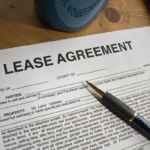Commercial Real Estate (CRE) investment can change your financial future, but only if you know how to navigate the market wisely. Whether you’re new to investing or looking to grow your portfolio, this guide covers the basics to help you make informed decisions in the CRE field.
What Is Commercial Real Estate (CRE)?
In simple terms, CRE refers to properties used solely for business purposes, including office buildings, retail spaces, warehouses, and apartment complexes with multiple units. Unlike residential real estate, which often involves emotions and lifestyle choices, CRE focuses on numbers, cash flow, and returns over the long term.
Why Invest in CRE?
Here’s why many investors are interested in commercial properties:
- Higher Income Potential: CRE properties typically offer better rental yields than residential properties.
- Stable Cash Flow: With long-term leases and reliable tenants, you can expect a steady income.
- Inflation Hedge: CRE values tend to increase over time, particularly in areas with high demand.
- Leverage Opportunities: You can use financing and equity in creative ways to expand your portfolio.
Types of CRE Properties
Before diving in, familiarize yourself with the main asset types:
- Office Spaces: Corporate headquarters and co-working offices.
- Retail Properties: Shopping centers, storefronts, and restaurants.
- Industrial/Warehousing: Distribution centers and manufacturing facilities.
- Multifamily Units: Apartment complexes with five or more units.
- Special Purpose: Hotels, healthcare facilities, and schools.
Each type has its advantages and disadvantages, and the best choice depends on your goals, budget, and willingness to take risks.
How to Get Started in CRE Investment
1. Clarify Your Investment Goals
Are you looking for passive income, value appreciation, or diversification? Your goals will shape your decisions.
2. Understand Your Risk Tolerance
CRE comes with risks. Vacancies, maintenance costs, and market changes are all part of the equation.
3. Learn the Numbers
Cap Rate (Capitalization Rate)
NOI (Net Operating Income)
Cash-on-Cash Return
Familiarize yourself with these terms. They help you assess property performance.
4. Build a Solid Team
Collaborate with professionals: brokers, property managers, legal experts, and tax advisors. CRE is not a solo venture.
5. Secure Financing
Look into loans, partnerships, or syndication deals. How you fund the deal is just as important as the deal itself.
Common Pitfalls to Avoid
- Overleveraging: Excessive debt can turn a good deal into a risky situation.
- Poor Due Diligence: Always conduct inspections, zoning checks, and tenant background reviews.
- Underestimating Vacancy Risk: Always budget for periods without tenants.
- Neglecting Property Management: A poorly managed property loses money quickly.
Trends Shaping the Future of CRE
- Impact of Remote Work on Office Space
- Rise of Mixed-Use Developments
- Tech-Driven Property Management
- Sustainability and Green Buildings
- Staying informed about these trends will help you invest smarter, not just harder.
Final Thoughts
Starting in CRE investment can feel daunting, but it’s about laying the groundwork, staying updated, and knowing when to take action. Don’t wait for the “perfect” moment; start with what you know now and learn along the way.
As Sharon Hafuta mentioned, “A blog post isn’t just an article; it’s an entryway into your world.” And CRE? It’s a doorway to wealth-building if you approach it wisely.
Ready to Explore CRE Opportunities?
At W.E. Management Group, we help investors find the right commercial properties, manage them effectively, and maximize returns. Let’s discuss your strategy. Your investment journey starts here.




No Comments